Memory and Identity in Latin America Final
1/22
Earn XP
Description and Tags
Original: https://quizlet.com/1012922685/memory-and-identity-in-latin-america-final-flash-cards/?i=176xo5&x=1jqY
Name | Mastery | Learn | Test | Matching | Spaced |
|---|
No study sessions yet.
23 Terms
Antonio Ruiz, The Dream of Malinche, 1939 (Mexican Artist)
Surrealist work that explores Malinche's story (translator and wife of Hernan Cortez). Work uses forced perspective backwards depicting Mexico City.
Medium: Oil on canvas
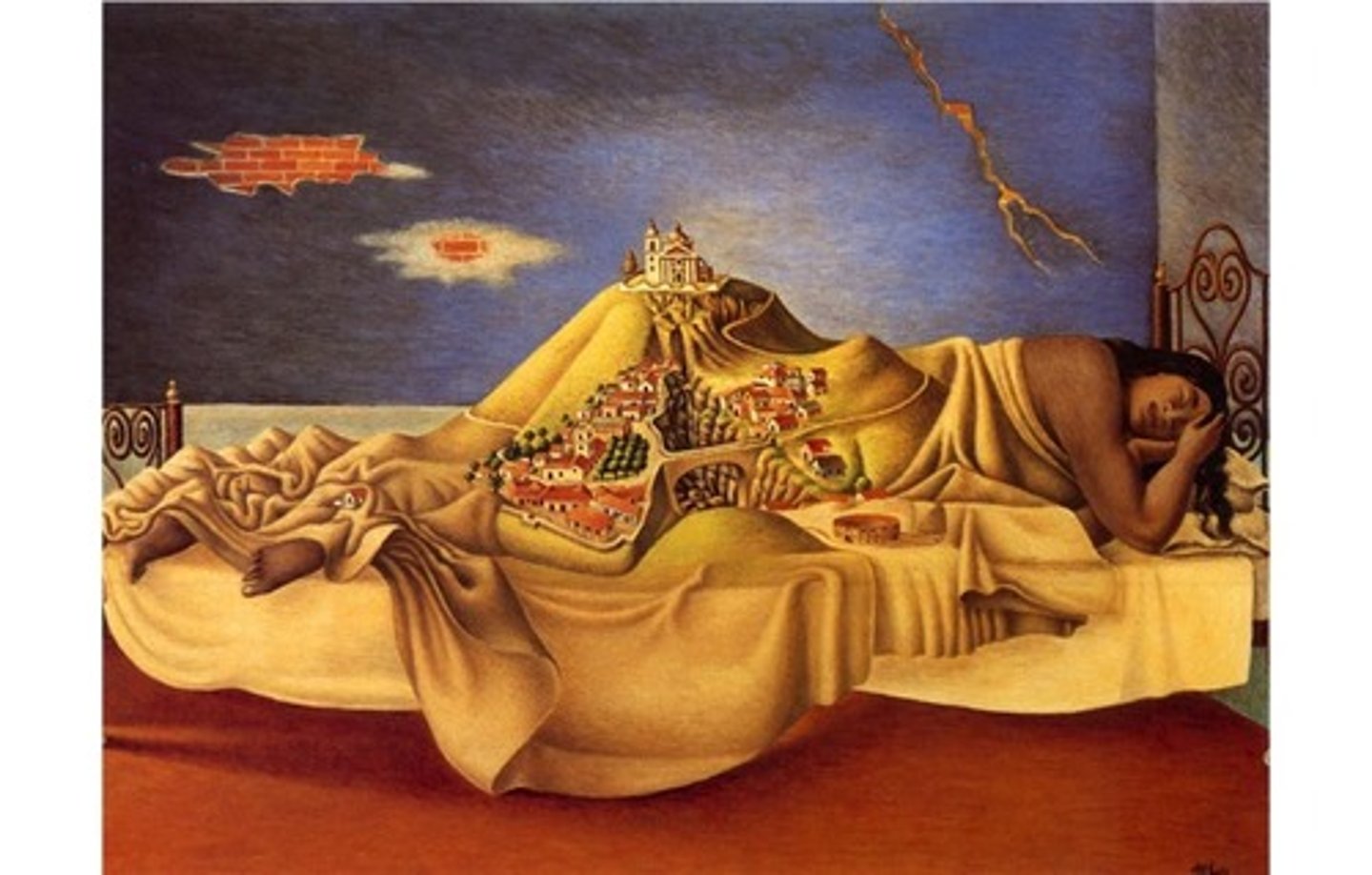
Jose Sabogal, The Sower, Amauta magazine cover, 1927 (Peruvian Artist)
Came out during a time where people shared modernist ideas. Emphasizes connection and significance of land to indigenous identity. Places a political focus on the past and preservation of culture. Figure dressed in traditional, historic clothing in celebration.
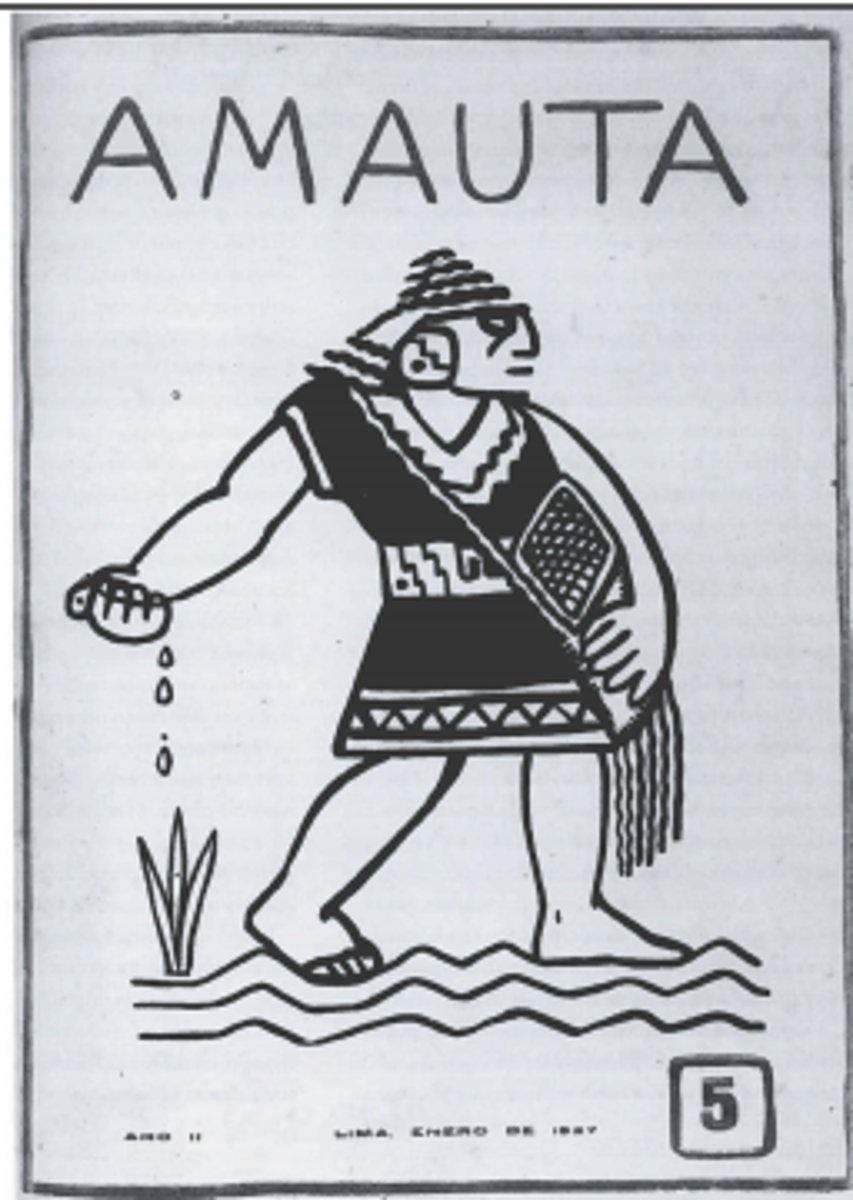
Frida Kahlo, Love Embrace of Universe, Earth (Mexico) 1949 (Mexican Artist)
Dreamlike surrealist depiction of Universe. Universe/Earth depicted as a woman, Kahlo self portrait featured holding Diego Rivera. Xolotl dog featured as connection to Mayan.
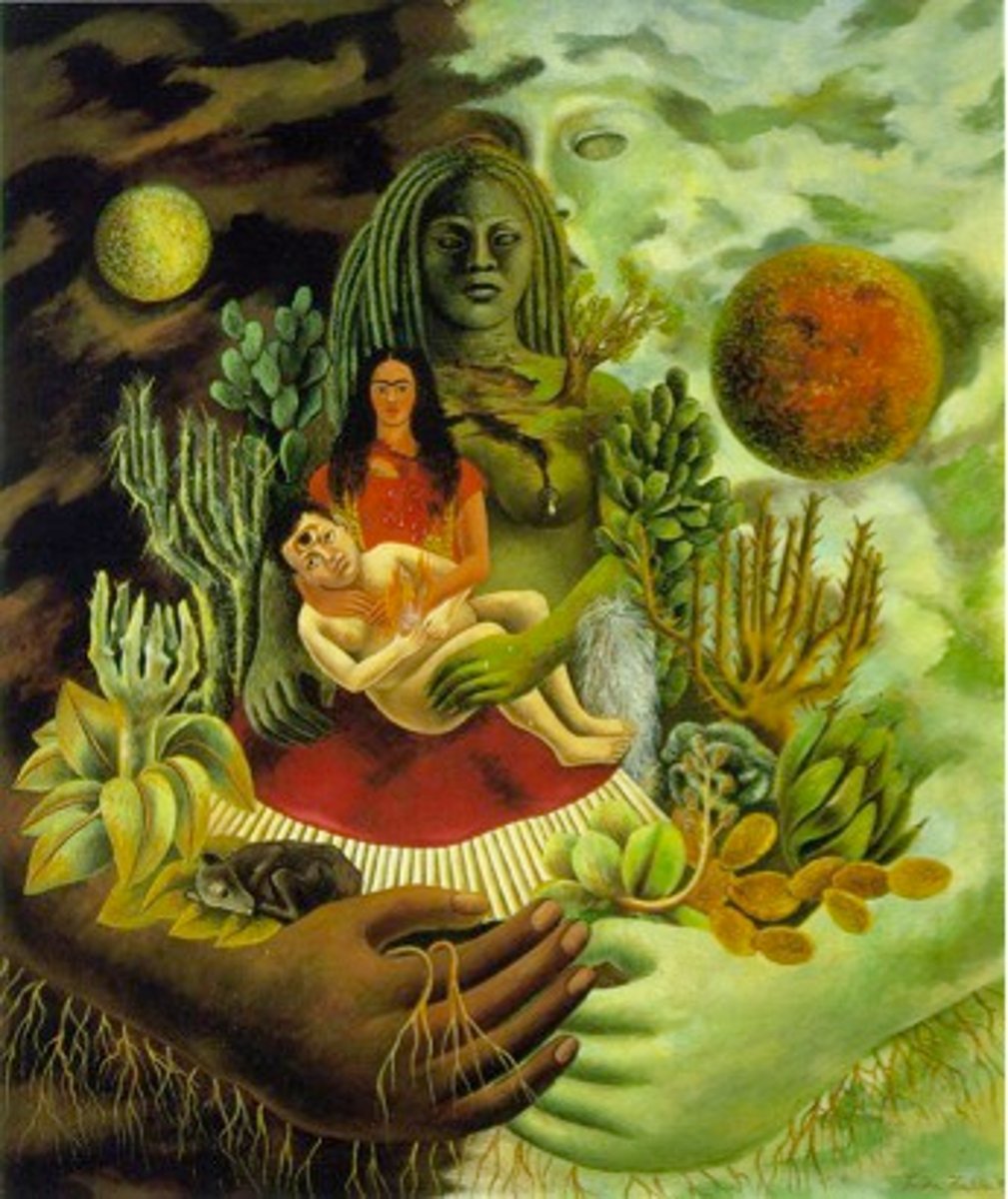
Ronny Quevedo, Ulama-Ule-Alley Oop, 2017 (Ecuadorian Artist)
Showcase of collective history. Dynamic movement and linework is emphasized and uses layering and abstraction. Celebrating culture and representing identity using shared activity.
Medium: Enamel, silver leaf, vinyl, and graphite pencil on mylar,
42 × 84 in. (106.7 × 213.4 cm)
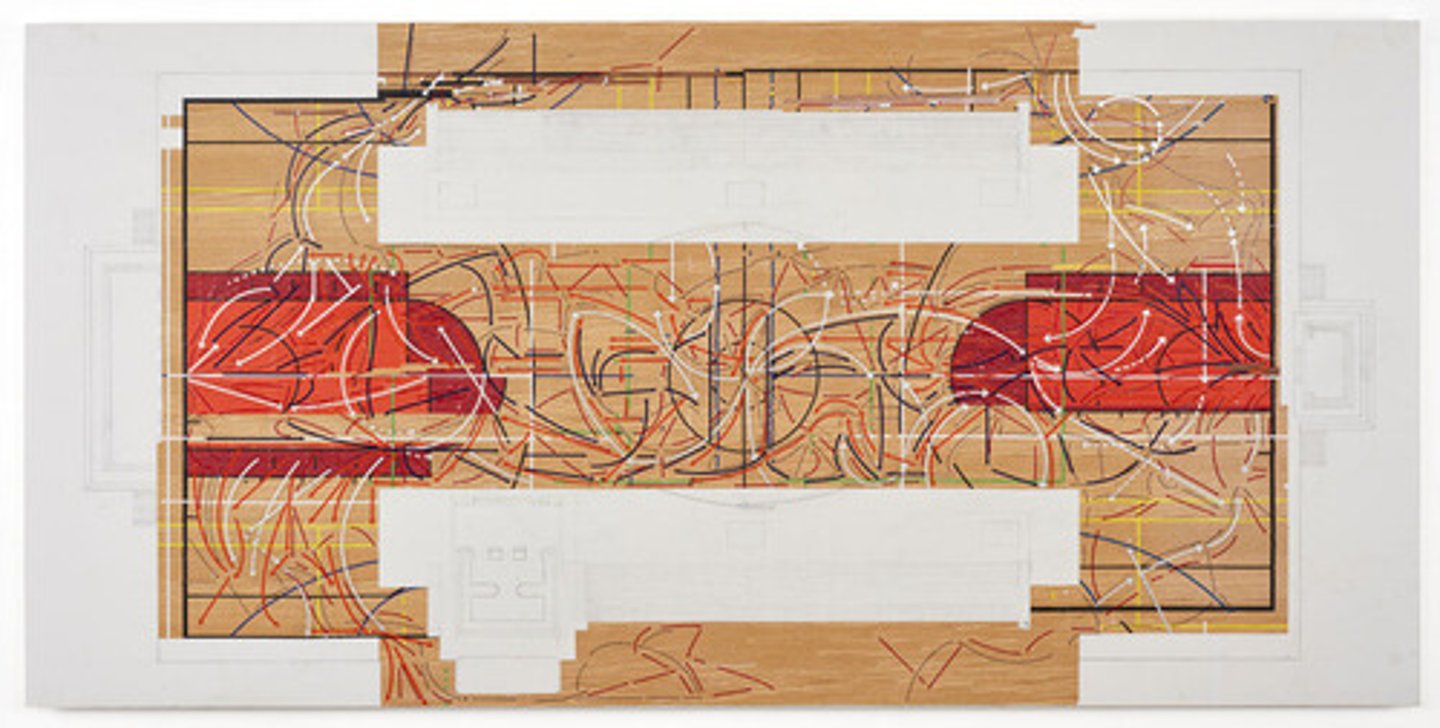
Diego Rivera, Creation, 1922-1923 (Mexican Artist)
Represents creation story with European artistic influences. Uses byzantine style painting for hands of figures and includes Greco-Roman clothing. Depiction of Adam, Eve, and the Holy Trinity. Eve shown as an indigenous woman. Christ in the center with the 4 evangelists (Matthew, Mark, Luke, and John) depicted as animals. In National Preparatory School in Mexico City.
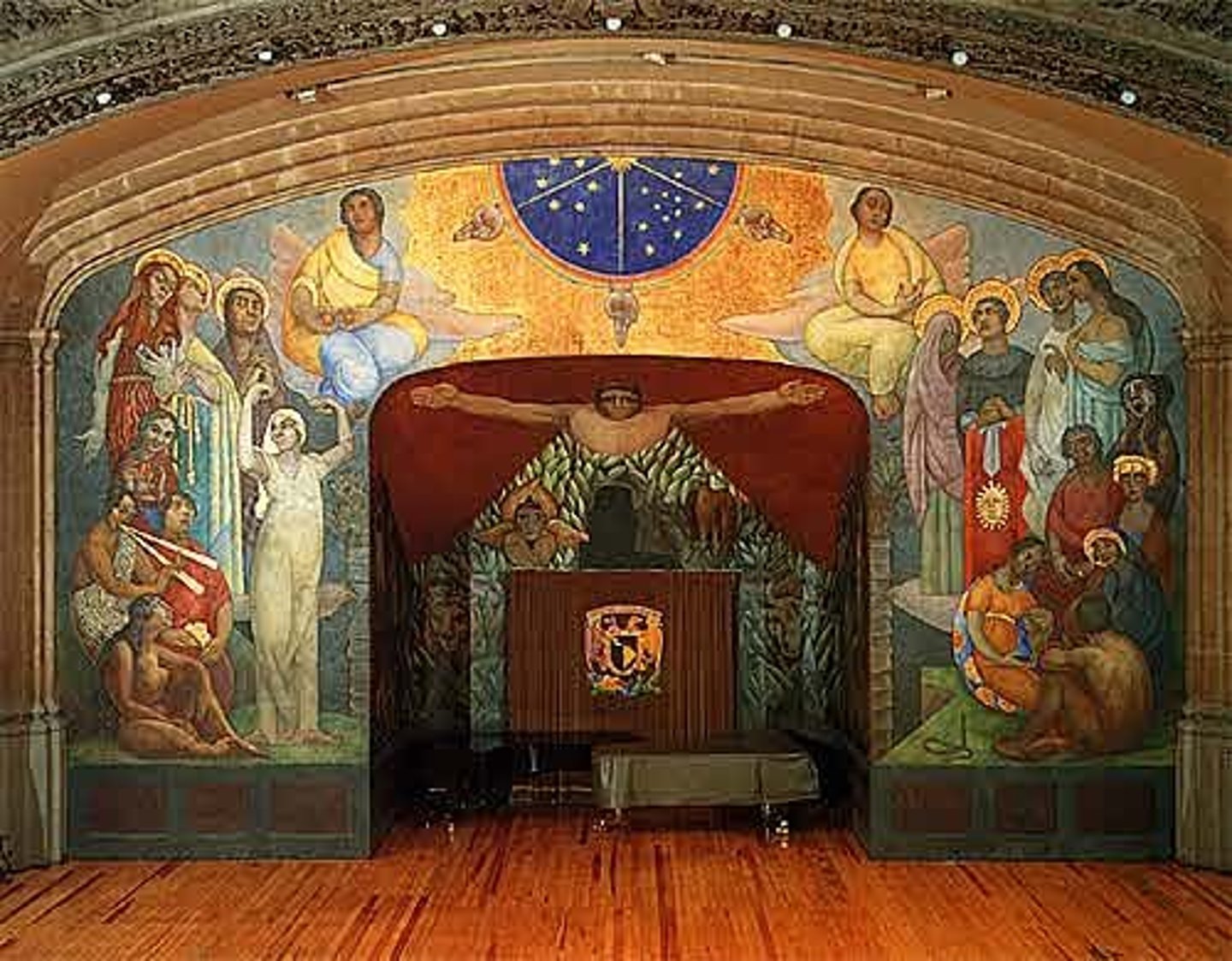
Joaquín Torres-García, Constructivist Ship, 1934 (Uruguayan Artist)
Studied in Europe. Focuses on abstraction, wanted to move away from figurative painting after WW1. Uses tension, and geometric form. Reducing forms, wants to create universal symbols, things people are able to understand everywhere.
Medium: Oil on board
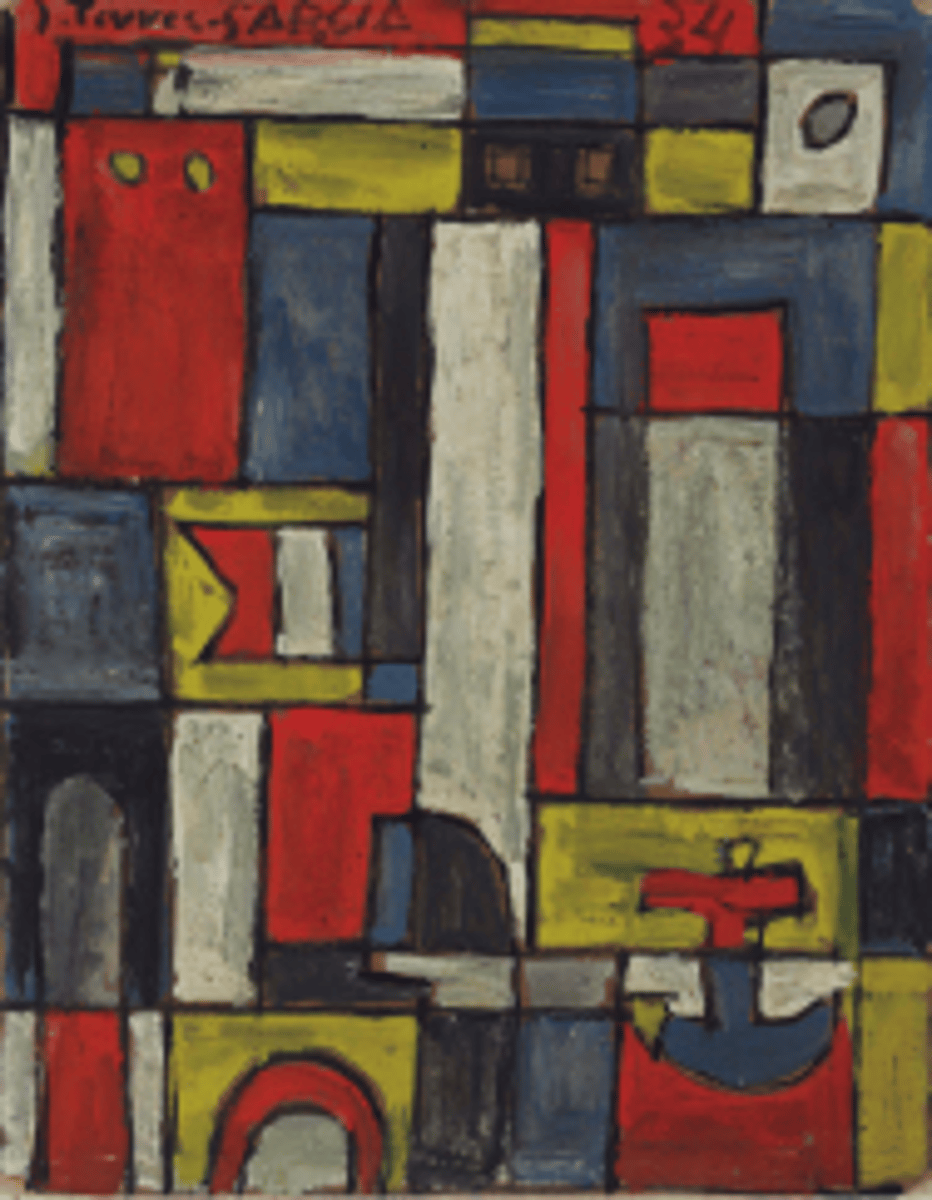
José María Velasco Gómez, Citlaltepetl (1879) (Mexican Artist)
Realist Mexican painting depicting one of Mexico's highest mountain and volcano. Displayed Mexico's nationalist identity.
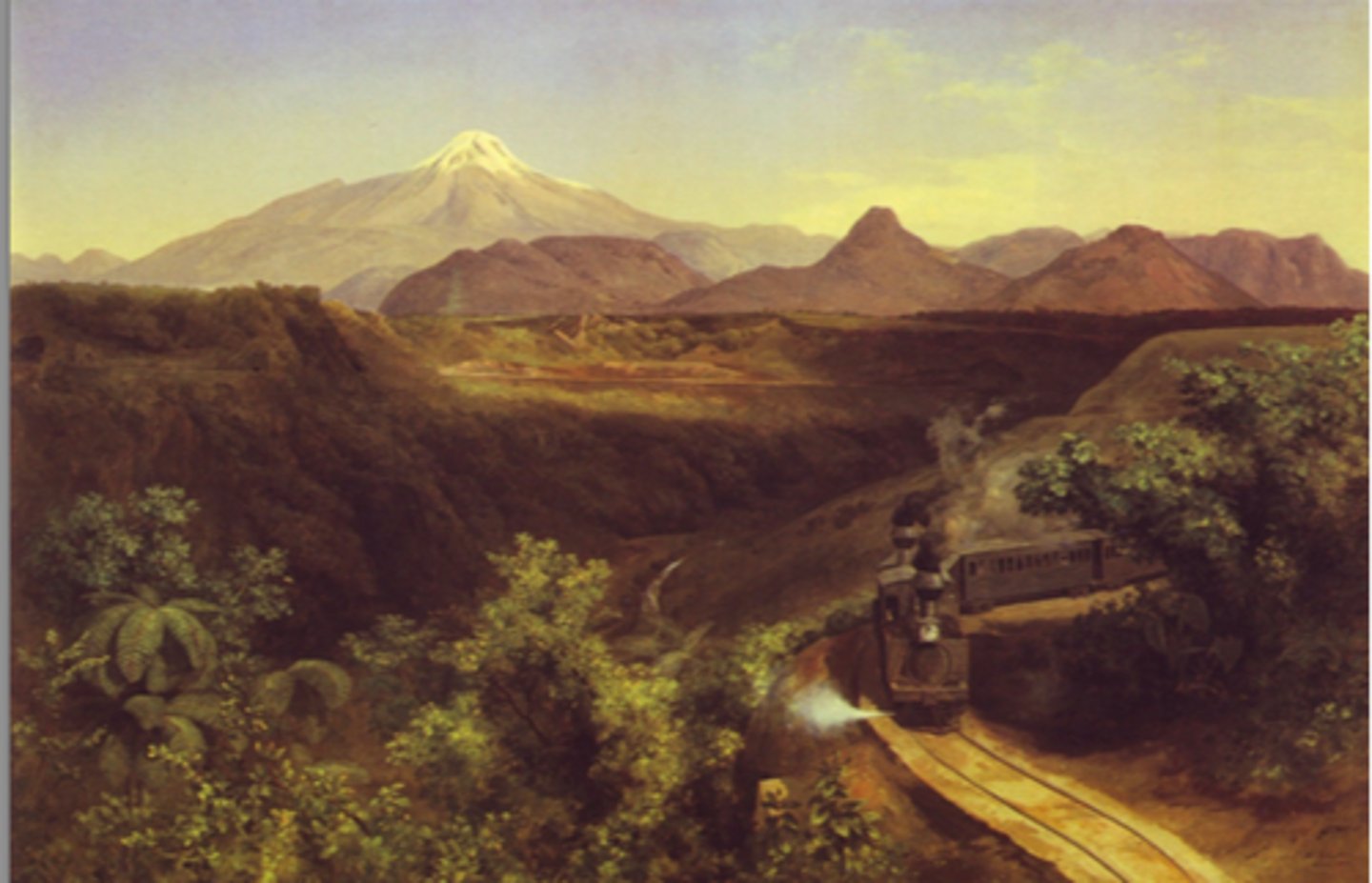
Leonara Carrington, The Magical World of the Maya, 1964 (British-Mexican Artist)
Surrealist landscape work that depicts mythical creatures and spiritual reality. Shows heavens, Earth, and underworld. Example of historicizing a people, imagery of things from different time periods (feathered serpent alongside 3 crosses). Histories are blended and not in tension with one another.
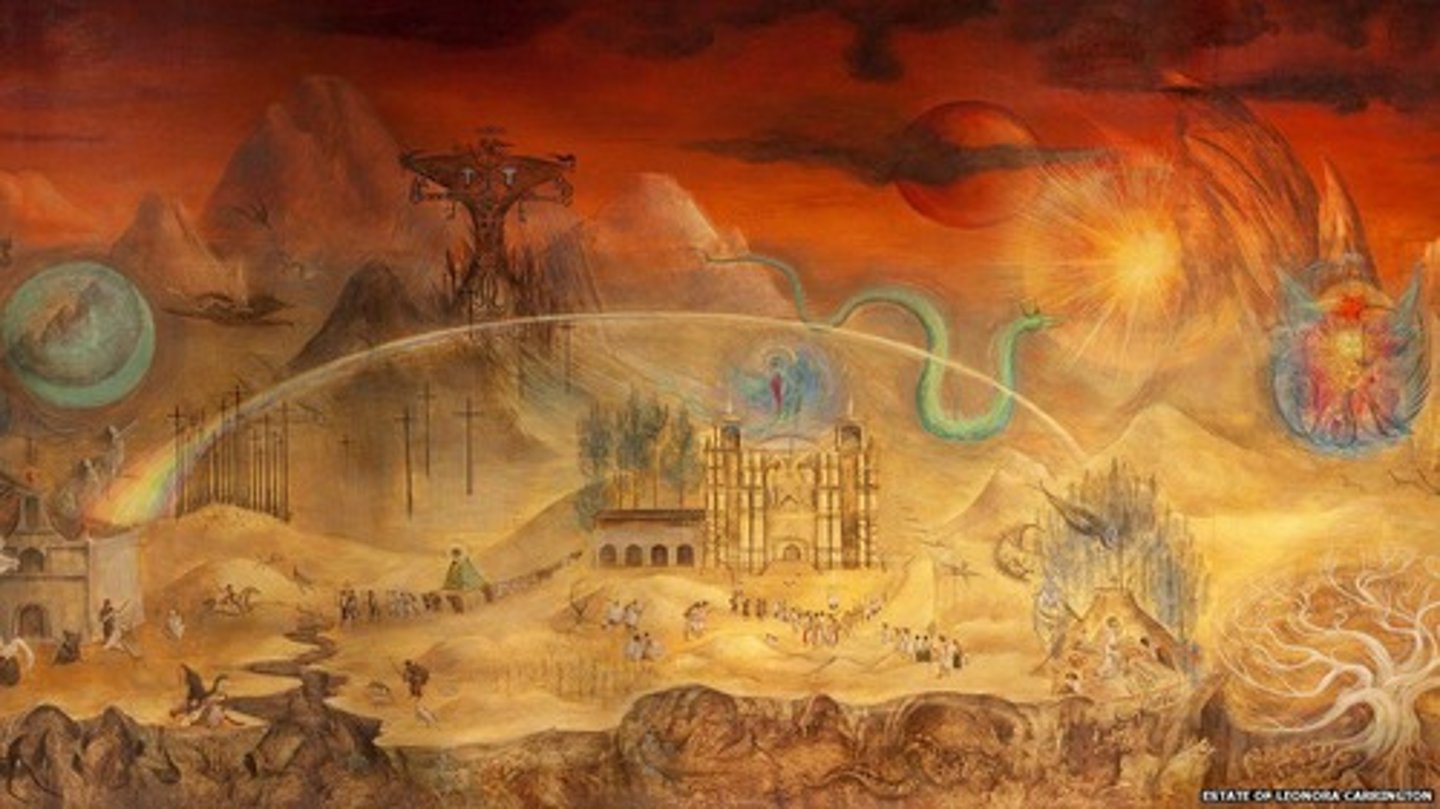
Camilo Egas, Group of Indians, 1922 (Ecuadorian Artist)
Studied in Europe. Brought indigenismo to high art world. Figures depicted nude with only jewelry, emphasized to be exoticized. Depicted to fit primitive expectations (including use of he word Indians)
Medium: Oil on canvas
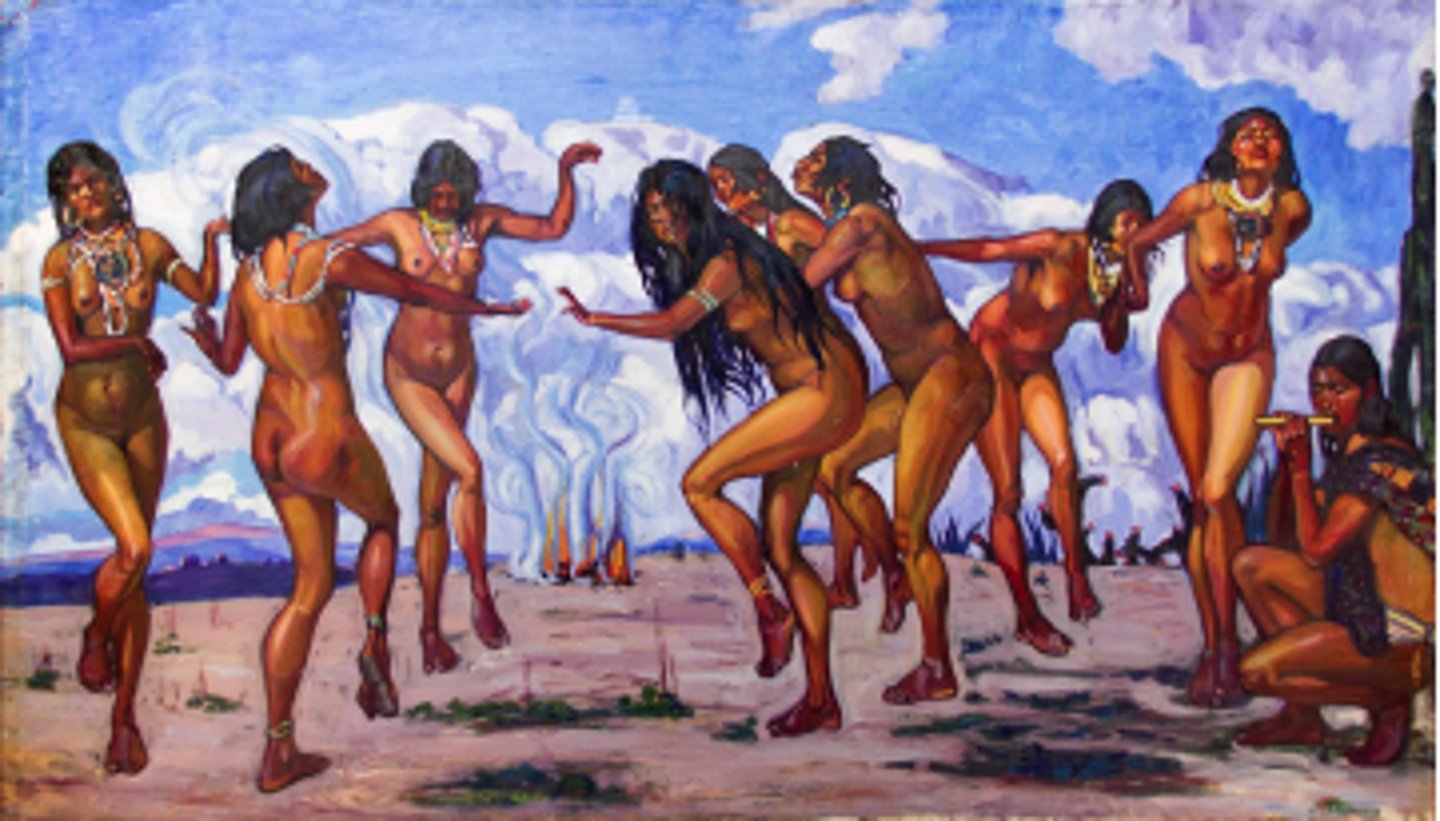
Martin Chambi, First Inti Raymi, 1944
Indigenous artist recreated Incan festival and photographed, knowledge for setting up the photoshoot came from Spanish. Chambi celebrates culture and connecting with heritage.
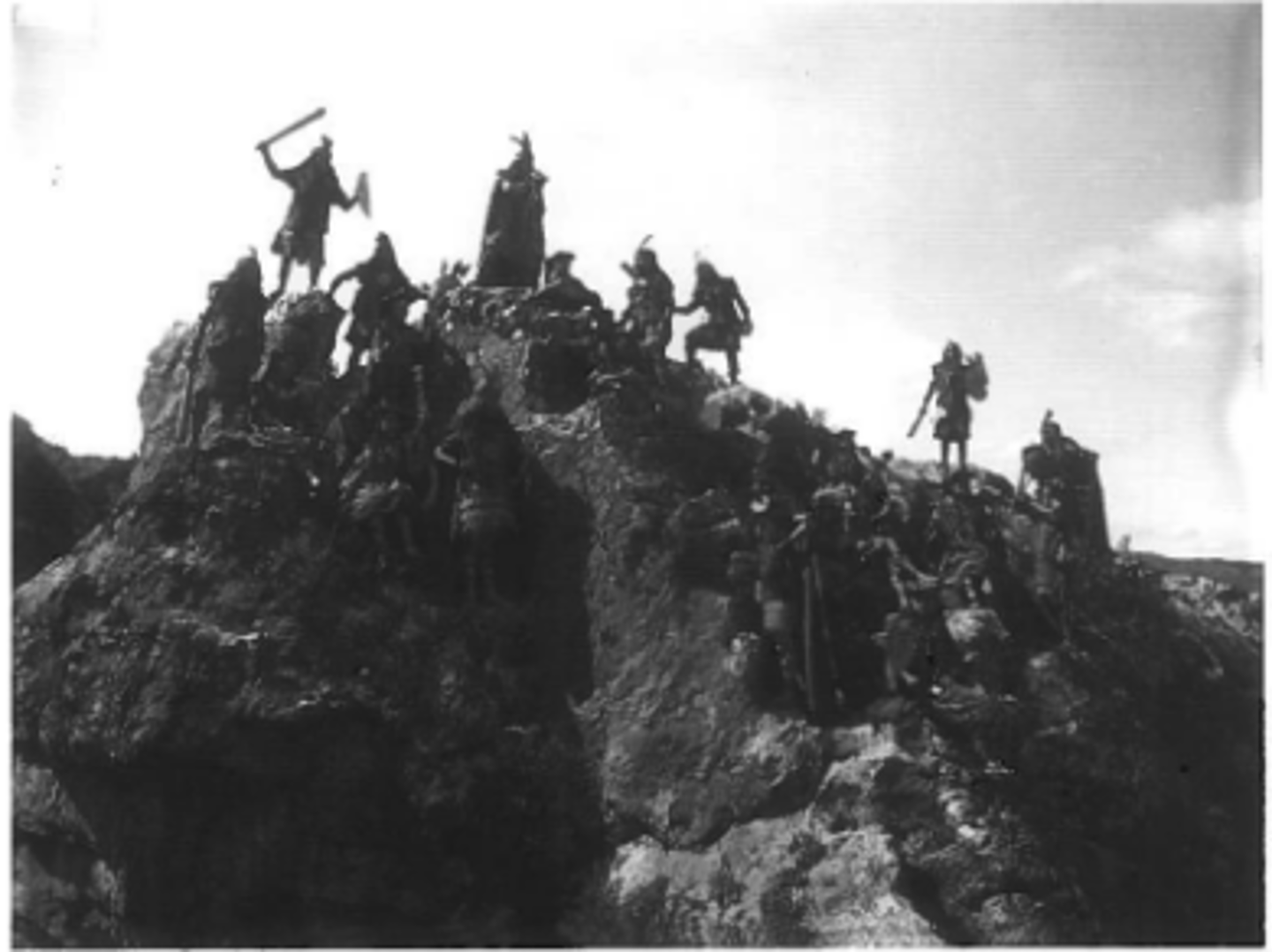
Martin Chambi, Isabel Mamani, Cuzco, Peru, 1948
Mamani had won an indigenous pageant and focuses on modern community for purpose of representing the culture.
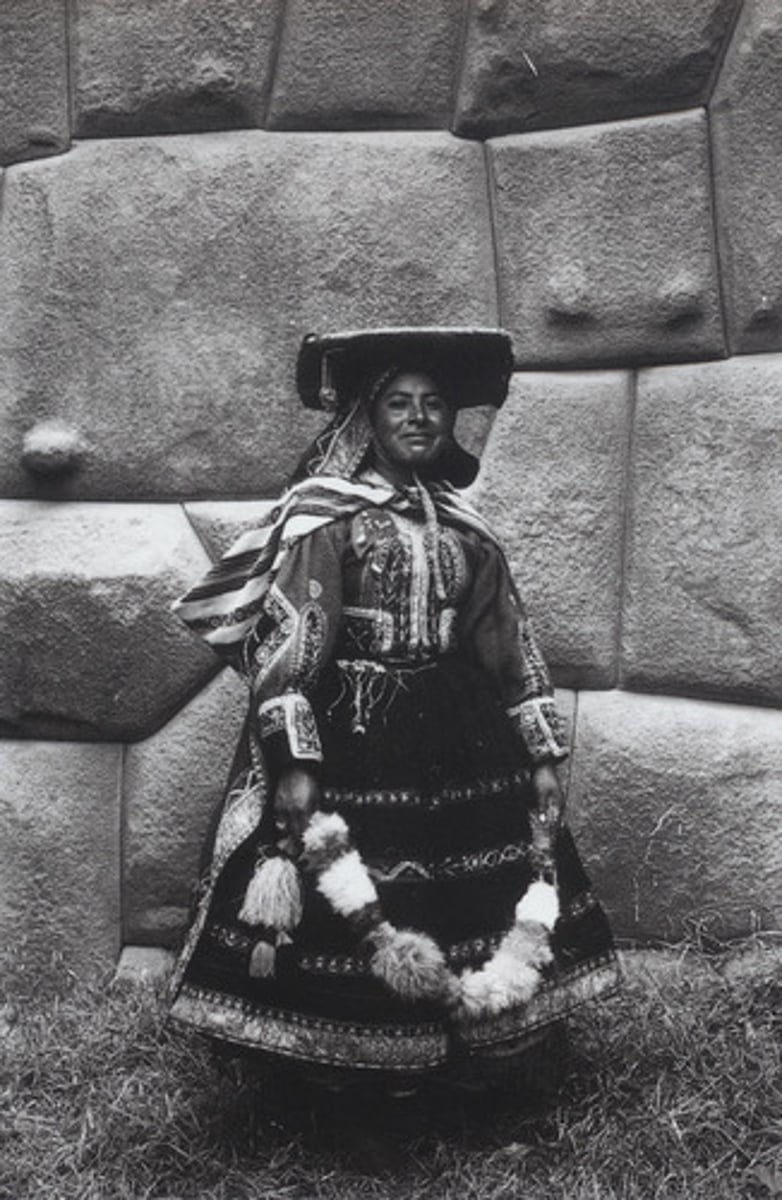
Camilo Egas, Indian Dance, Line Drawing, 1925
Pictorial, calling back to indigenous tradition, and pay homage to those. Sense of movement, and suggesting rhythm.
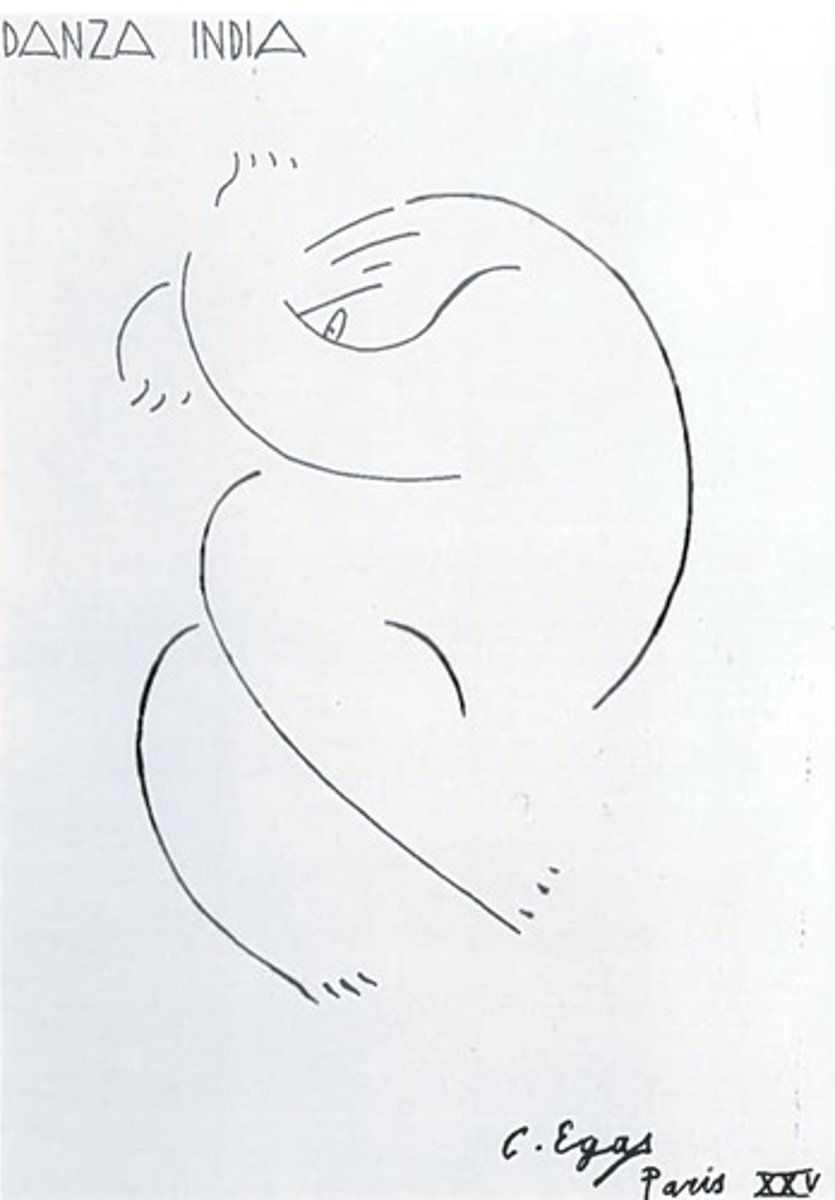
Joaquín Torres-García, Cosmic Monument, 1938, Montevideo, Uruguay
Directly wanted to represent pictographs. Spiritual connections with foundational shapes. In Montevideo, Uruguay. Not an indigenous artists, questions of ingenuity. Rigid structure, squares create format. Pulling back from Tehuanacu, even though that wasn't in Uruguay, slight generalizations and broader conversations.

Typical “indigenous woman” postcard, early 20th C (Figure 57, Hirshfield), MEXICO
Made by government to encourage tourism. Exoticising, shows traditional clothing, tools, and housing. Staged photos.
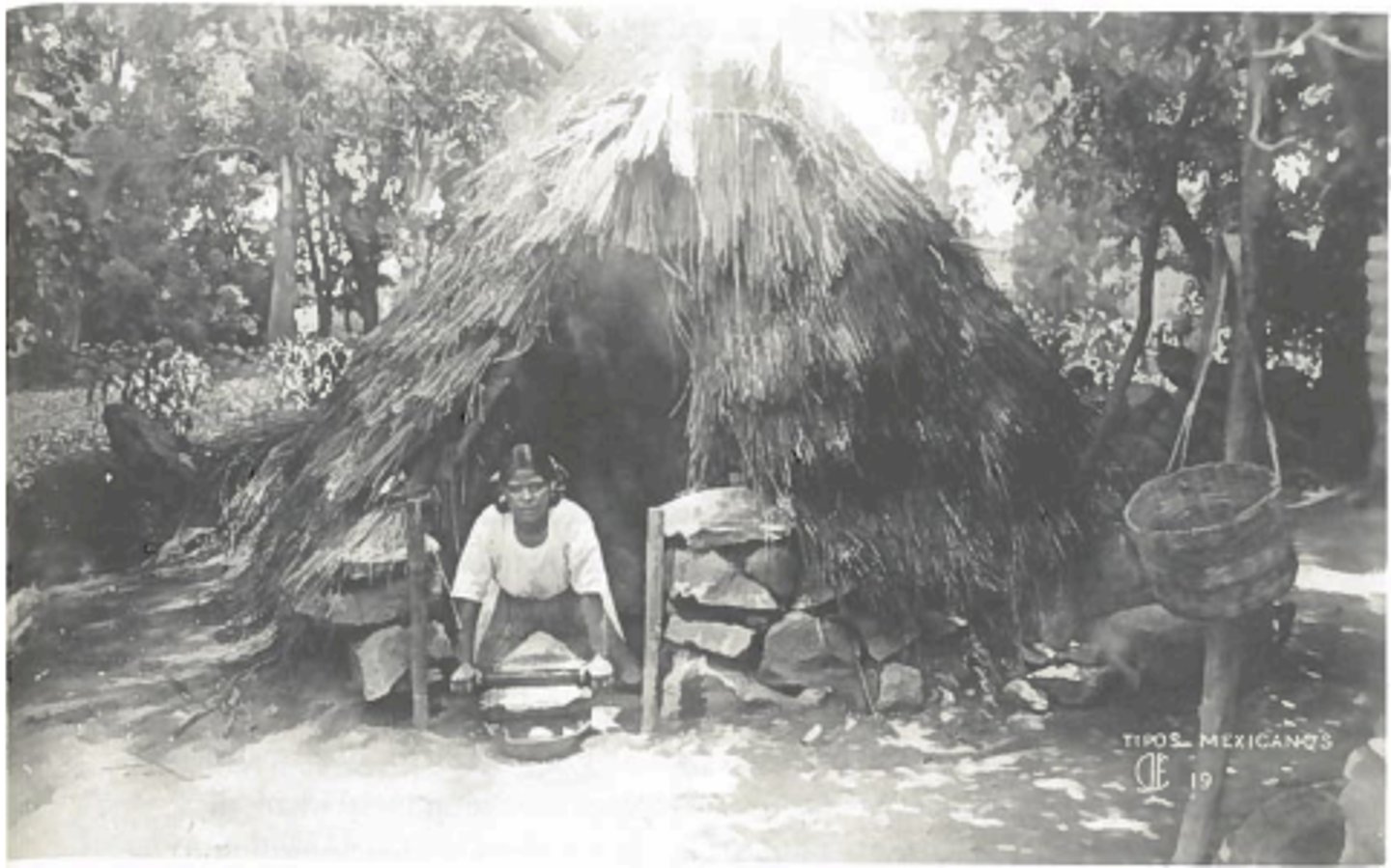
Clarissa Tossin (b. 1973, BRAZIL), still from Ch’u Mayaa, 2017 (Brazilian artist)
Video performance with dancer that includes background architecture, look inspiration from indigenous. Women activated by doing Mayan poses. Wears animal print to represent what rulers had on. Focused on claiming national identity.
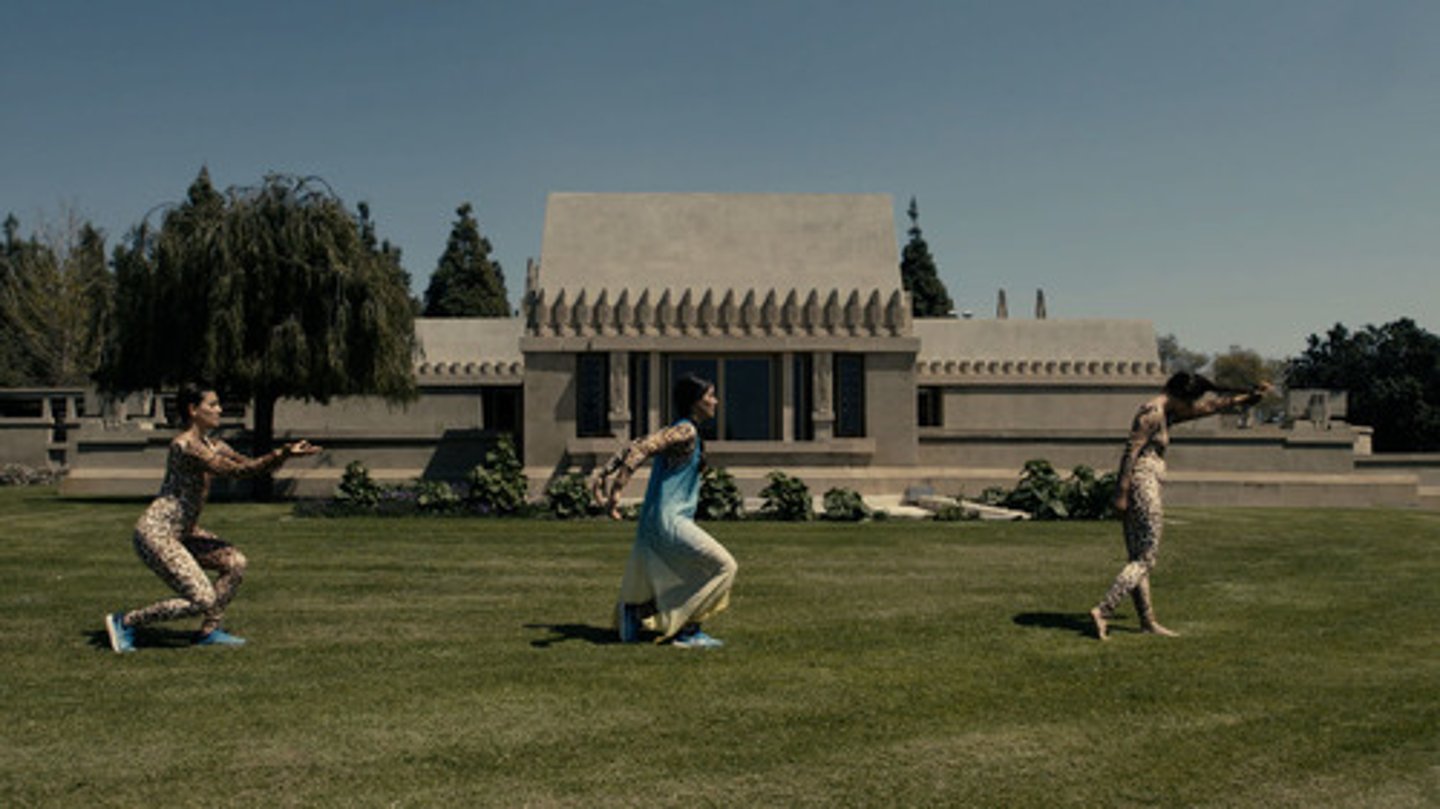
Edward Weston, Rosa Covarubbias, 1926, photo (American artist)
Concerned with depicting Mexican women. They have a passive role in image. The clothing envelops the girl and rural fashions were becoming popular. Brings in rural and folk culture, becoming foundational for Mexican identity (Tehuana Dress).
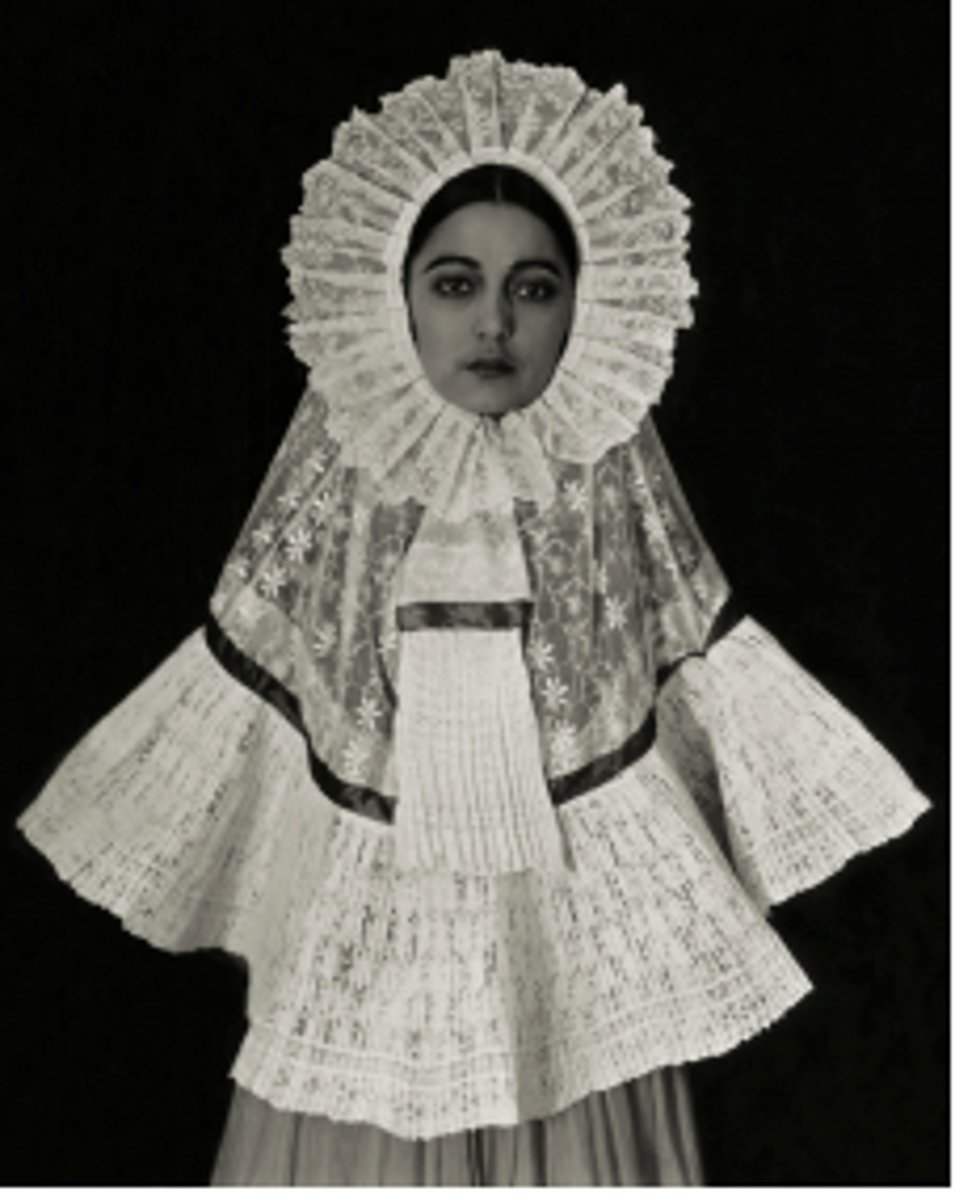
Anita Malfatti, Tropical, 1916 (Brazilian artist)
Added vibrancies and dynamic coloring to Brazilian art. Focuses on presence of atmosphere/ did exhbition to rebel against conservative art. Foster pride in Brazil.
Medium: 77×102 cm, Oil on canvas
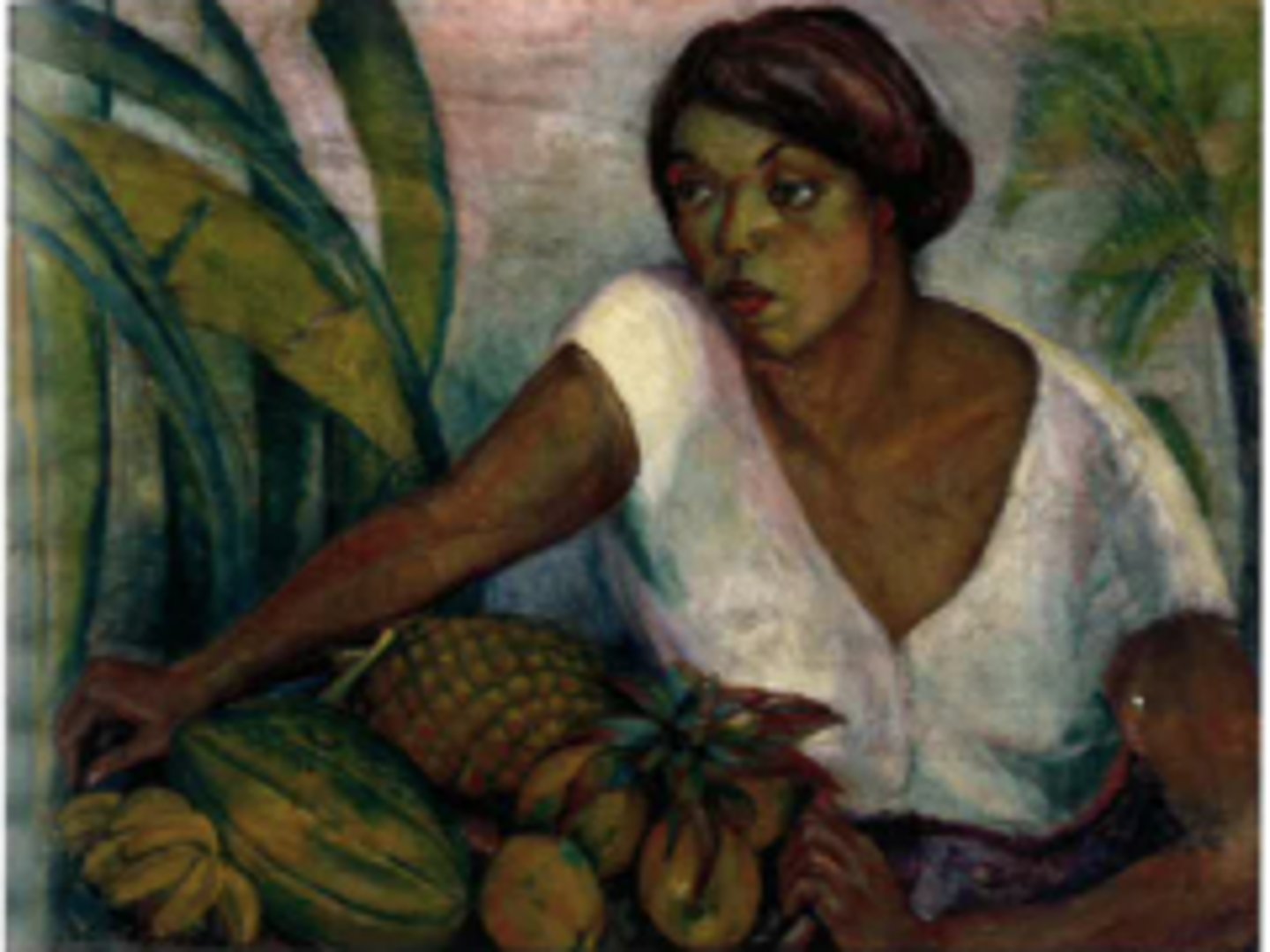
Jose Sabogal, 1945, Garcilasco de la Vega (Peruvian painter)
Focuses in indigenous culture, lotus/national flower of Peru. Depicted with pot on head. Focuses on heritage and changing ideal image of colonized world, directly uses references.
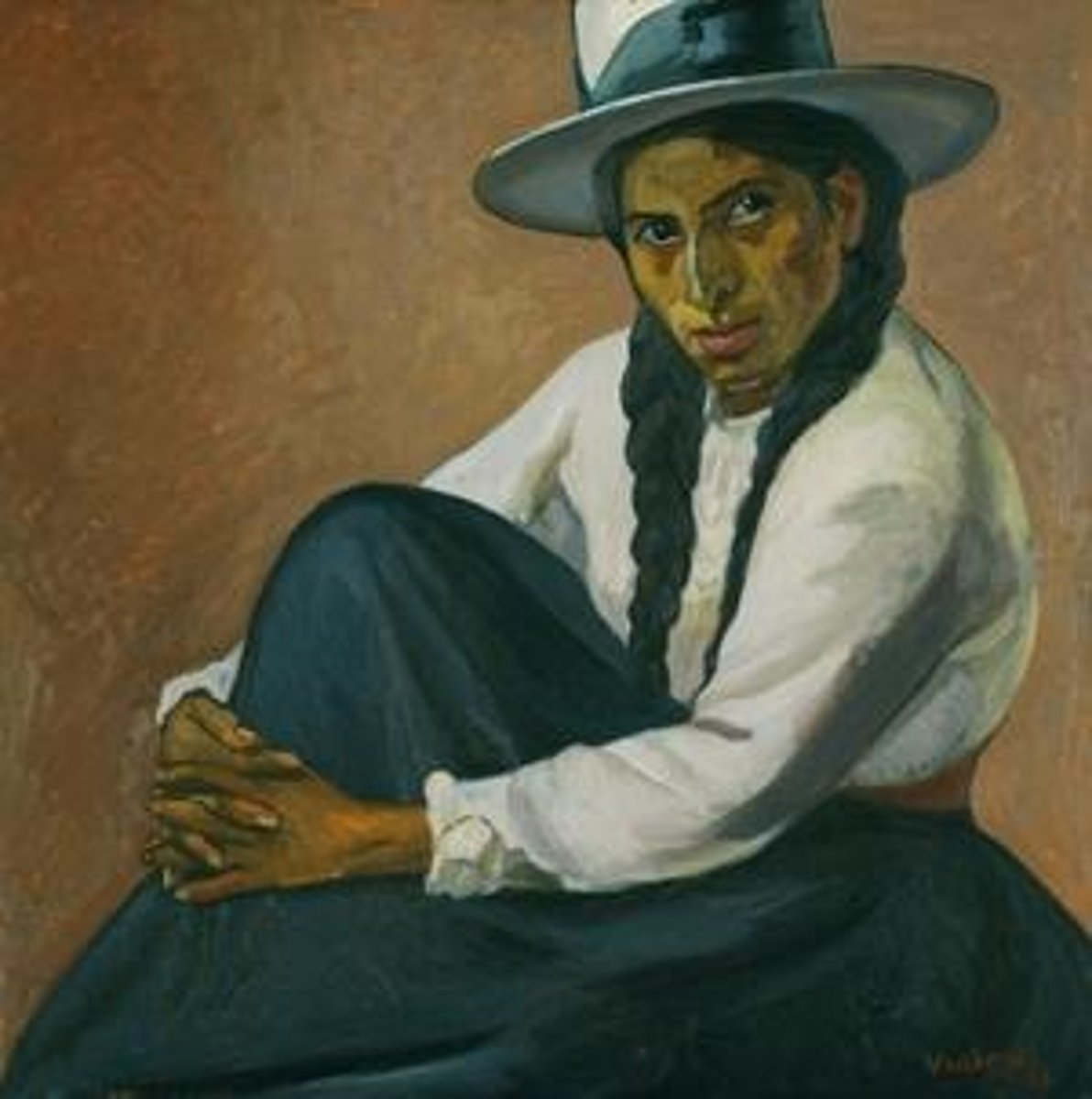
José Clemente Orozco (MEXICO), Ancient Human Sacrifice, Panel 3, The Epic of American Civilization1932–34, fresco. Hood Museum of Art, Dartmouth
Located in the United States. Point was to go against the European realist style. Includes front facing deities and other human figures in the side profile, reminiscent of indigenous tradition. References savagery of human sacrifice as a common justification for colonization. Not neo-classical drawing inspiration from Ancient Greece and Rome).
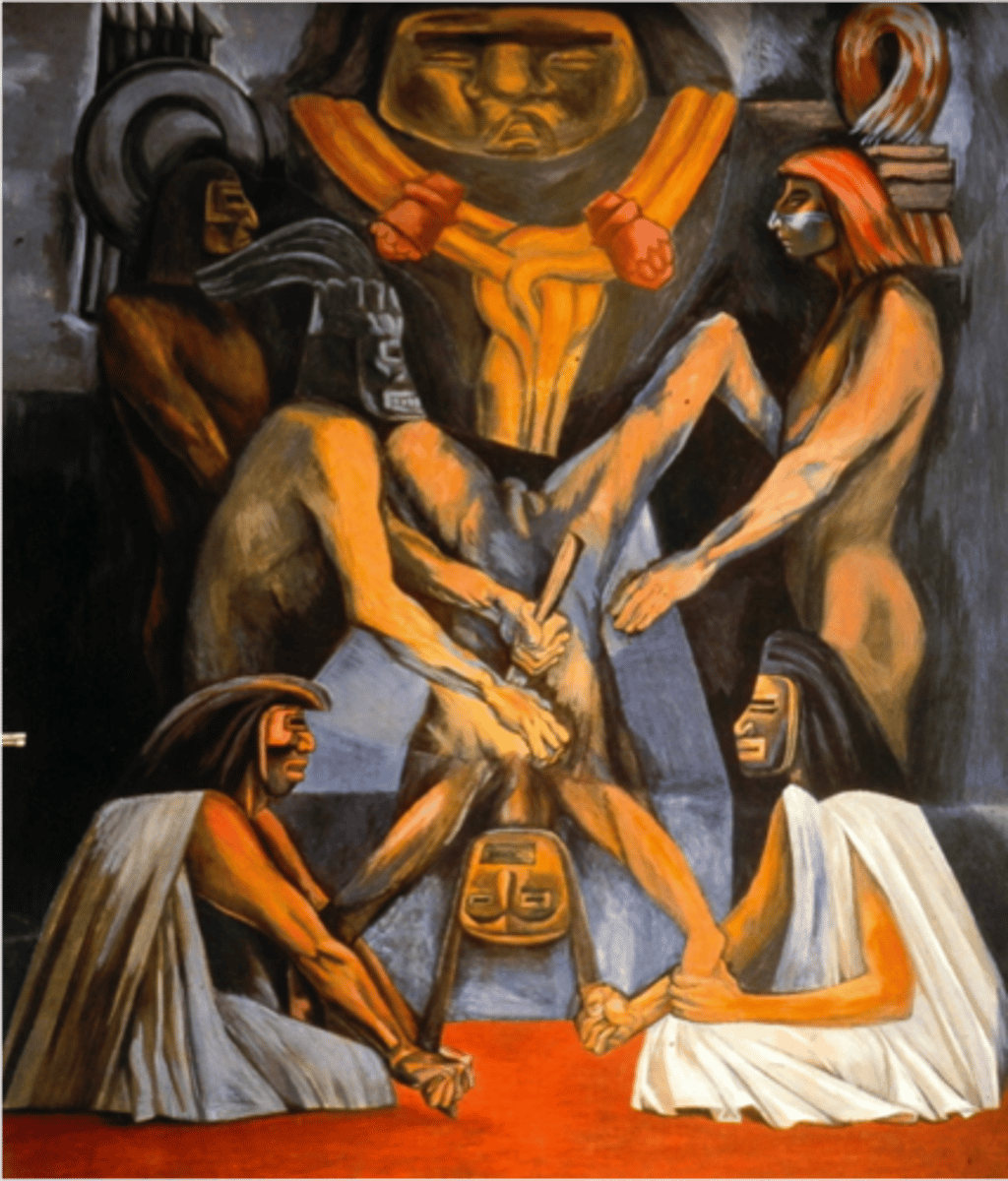
Jesús Contreras, Tlatoani Cuauhtemoc, 1889, Paris World’s Fair, from MEXICO
Sculpture that reached back to exoticized past, creating more for European artist and attracting tourist. Greco-Roman attire with helmet and draped clothing. Title is Mexica term or name of a Mexica emperor. Strong ruler depicted with national identity, neoclassical style but framed in Mexica identity.
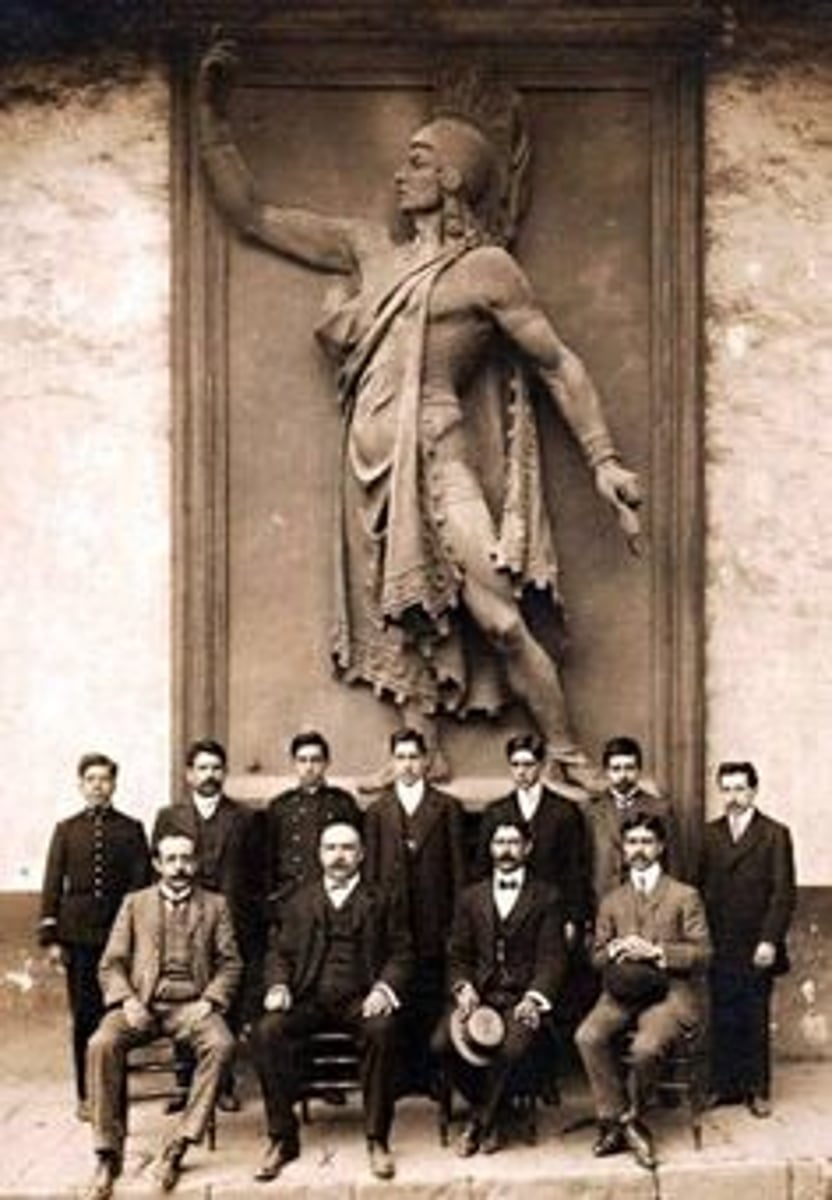
Manuel Álvarez Bravo, Optical Parable, (Mexican Painter) 1931, 1974
Surrealist and photography pioneer in Mexico bends reality in post revolution identity. Hints at hidden emotional and collective Mexican identity.
Medium: Gelatin silver print
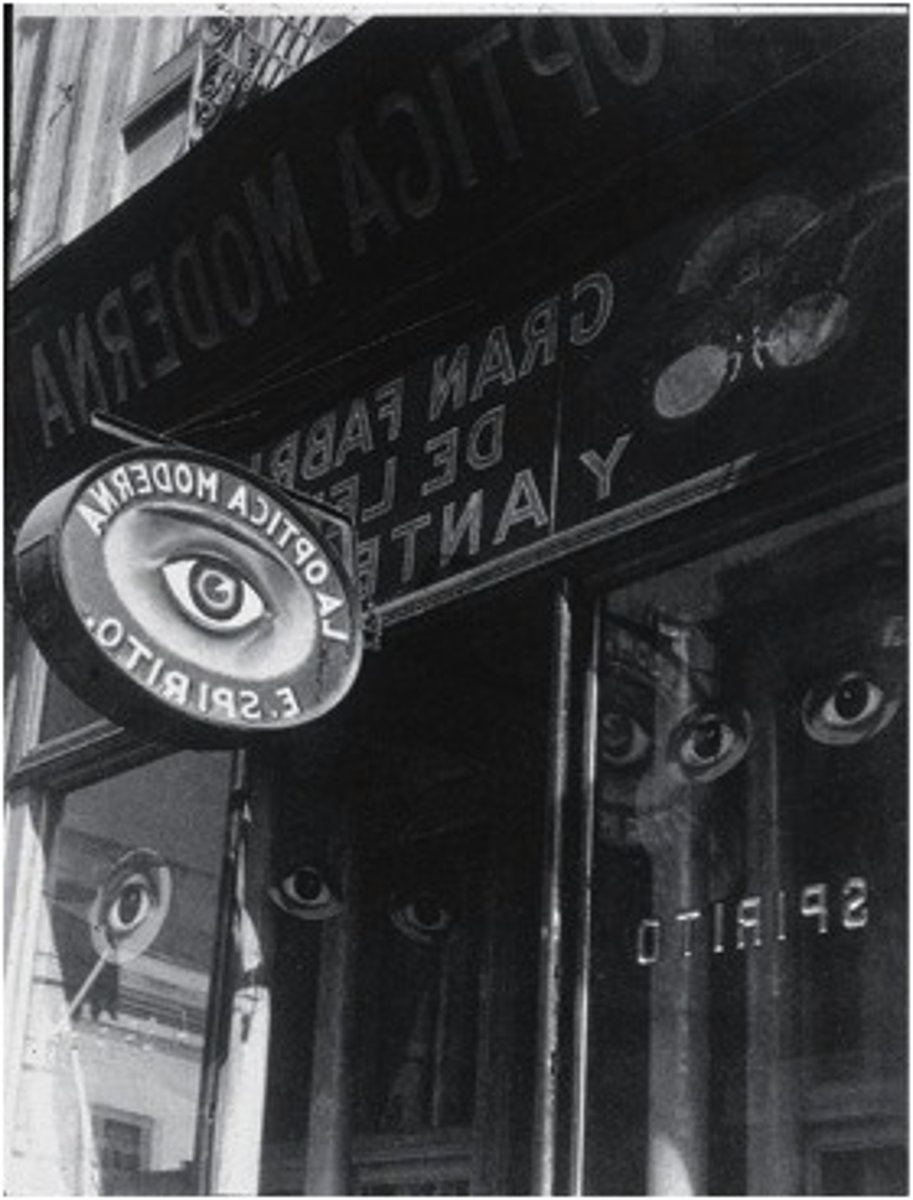
Eduardo Kingman, The Haulers, 1941, Ecuador
Located in Quito, Ecuador. Depicts actual conditions people lived in/ their daily lives. Placed in history, closer to realist. Dated to sometime in the 2oth century so contemporary. Different lifestyles and jobs, horsemen, traders; more realistic depiction.
Medium: Oil on canvas
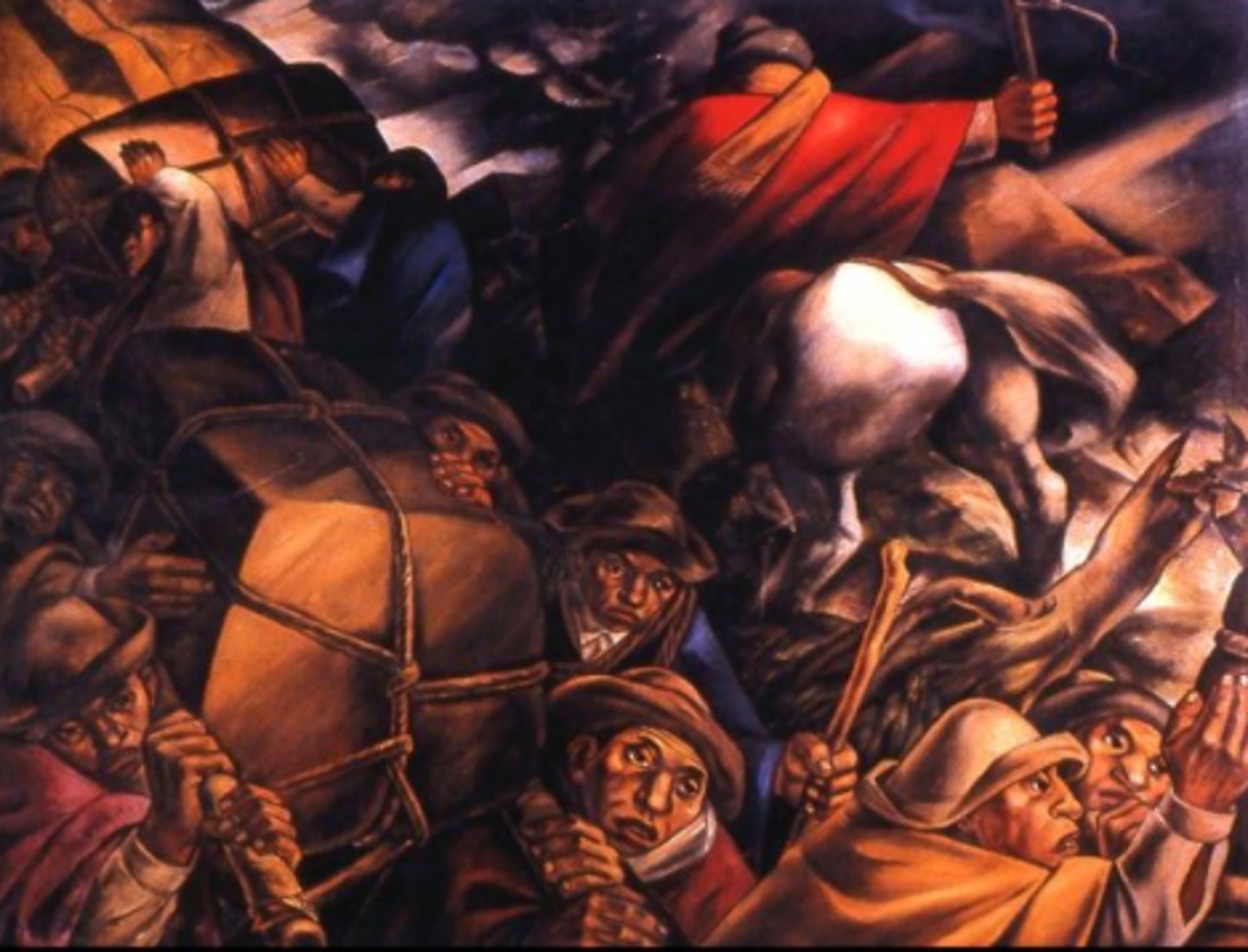
Camilo Egas, Festival Indio, 1932, NYC
Showed cultural pride and indigenous ceremony/indigenismo. Uses oil to show vibrant color. Broken up into awkward composition, rigid structure. Han dof God, folk culture, 20th century experience but also indigenous festivals and culture without any specificity.
Medium: Oil on canvas
